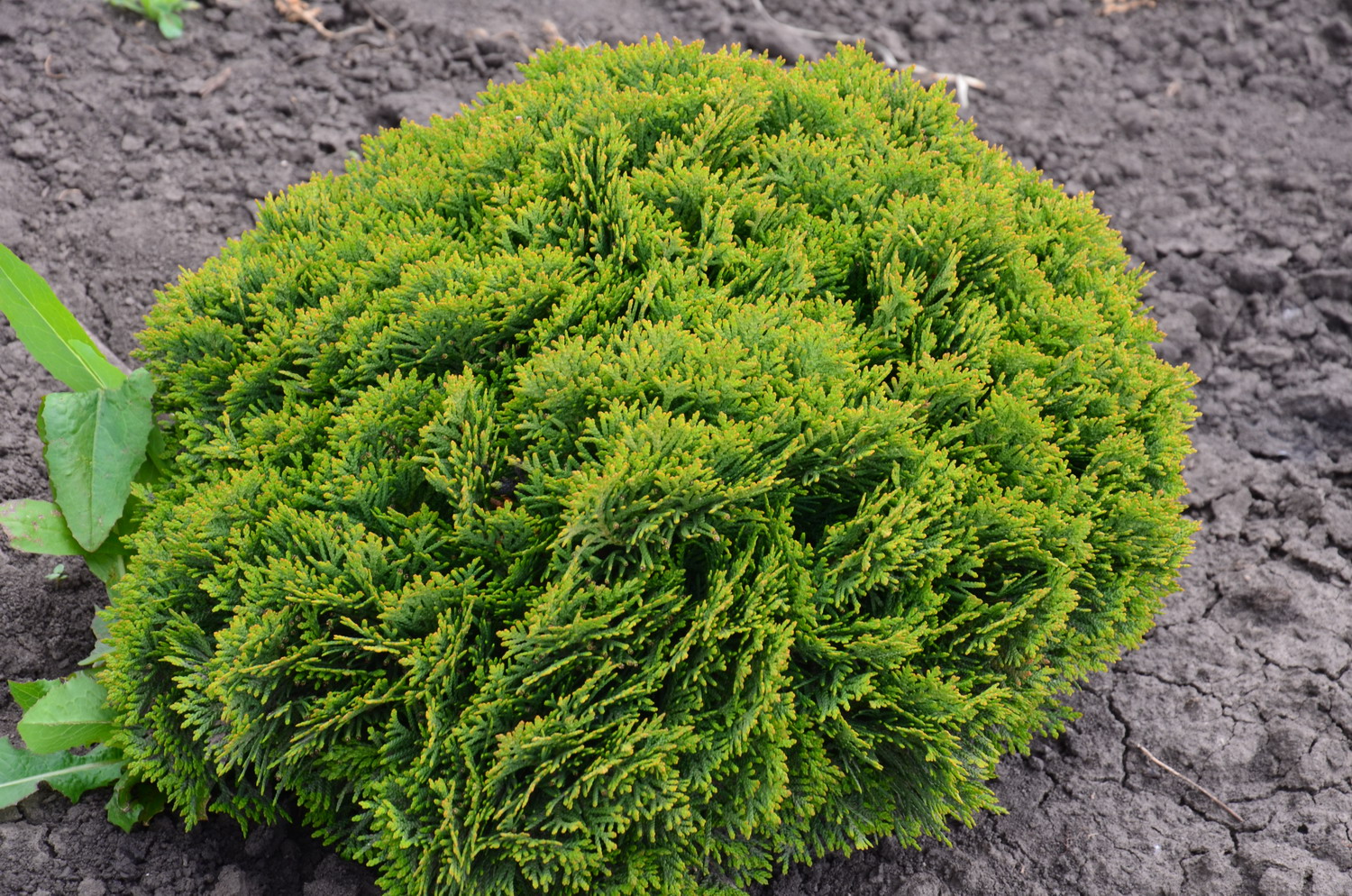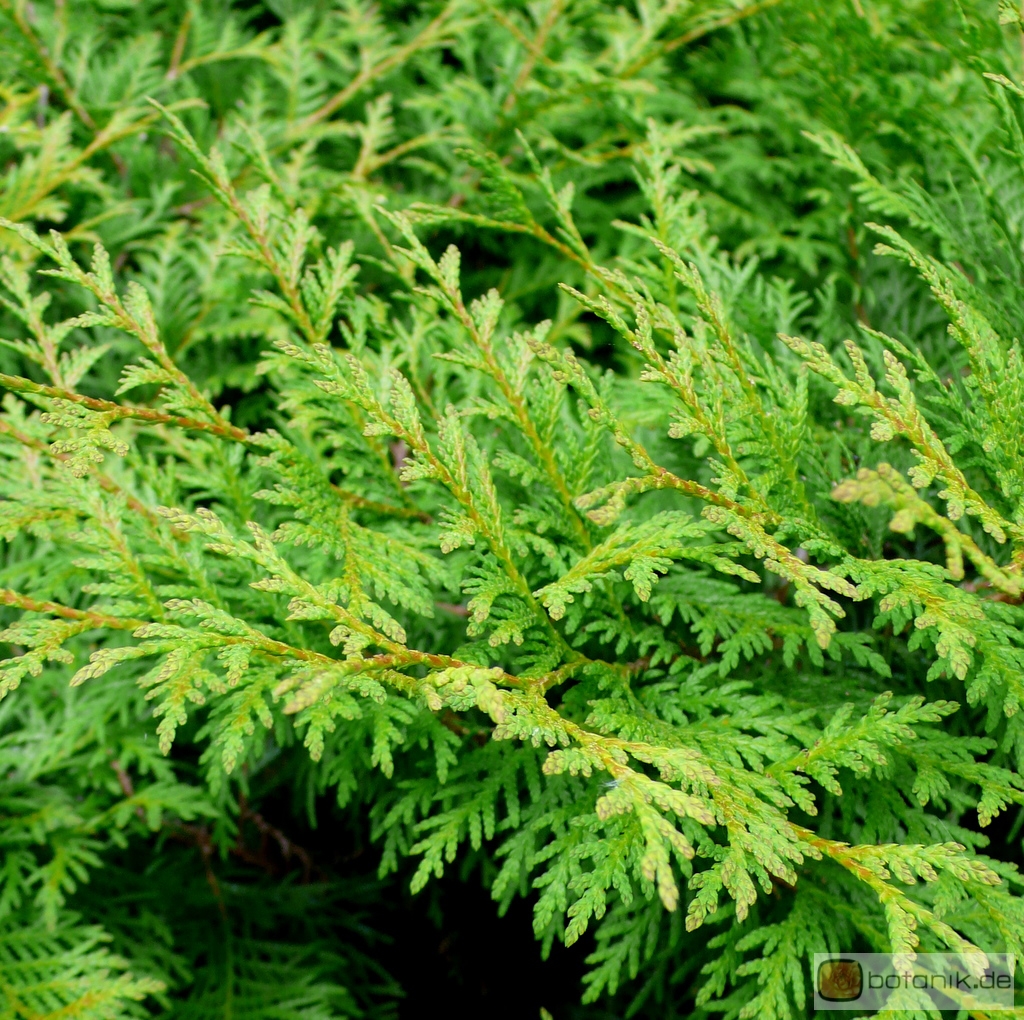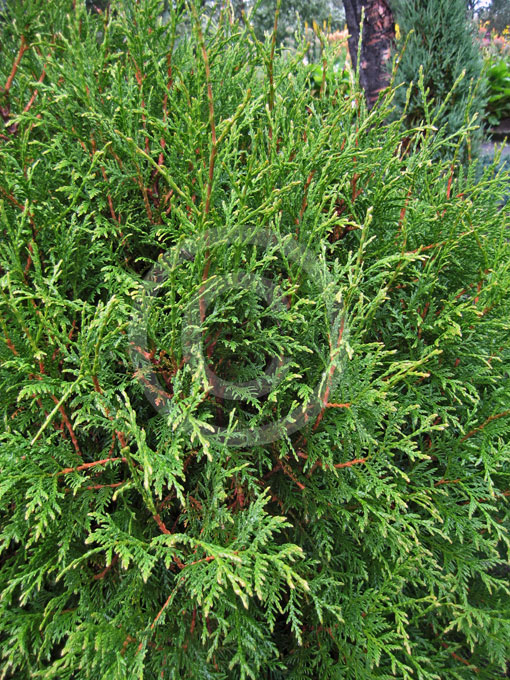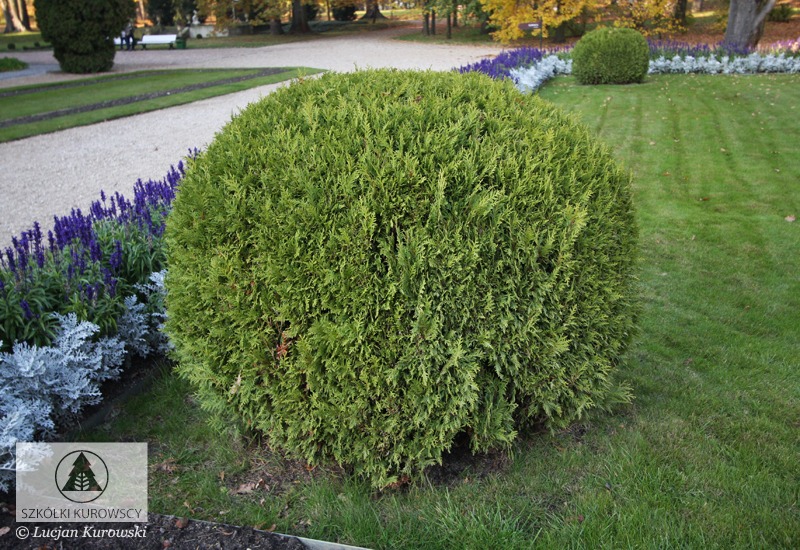
Thuja occidentalis Globosa
Thuja, belonging to the cypress family, is a genus of coniferous trees commonly known as arborvitaes, an apt name that translates to 'tree of life'. Originating from North America and East Asia, these trees have a rich history. Native American tribes utilized them for various purposes, from canoe building to medicine.

Thuja occidentalis 'Globosa' Rasadnik Franceskija
Thuja Occidentalis Globosa Arborvitae is an evergreen, dwarf conifer shrub with a spherical form. Globosa Arborvitae is blanketed in gray-to-green leaves that turn brown to green during winter. This deer-tolerant selection grows well in full sunlight with moist, acidic soils. It is a great choice for borders and hedges. Ideal for USDA Zones 2-7

Thuja occidentalis 'Globosa' Thuja occidentalis, Plants, Plant needs
Check Out Thuja Occidentalis On eBay. Fill Your Cart With Color Today!

Tuia Globosa nana occidentală globulară. Thuja occidentalis Globosa
Thuja occidentalis Figure 1. Middle-aged White-Cedar. White-Cedar1 Edward F. Gilman and Dennis G. Watson2 INTRODUCTION This slow-growing tree reaches 25 to 40 feet in height and spreads to about 10 to 12 feet wide, preferring a wet or moist, rich soil (Fig. 1). Transplanting is moderately easy if plants are root-

Thuja occidentalis 'Globosa Aurea', Lebensbaum 'Globosa Aurea'
Potentially harmful. Genus. Thuja. Genus description. Thuja are fast-growing evergreen trees of narrowly conical habit, with flat sprays of tiny, aromatic, scale-like leaves and small knobbly cones. Name status. Accepted. Advertise here. Find help & information on Thuja occidentalis 'Globosa' from the RHS.

Thuja occidentalis “Globosa” (Tuja “Globosa”) Rasadnik Fuderer
Thuja occidentalis 'Globosa'. As the name suggests, this cultivar is a rounded, globe-shaped shrub. It has attractive, slightly twisted dark green foliage. It is very hardy for sun or light shade. It is slow growing, reaching less than 90cm in the first 10 years. It makes a good border plant or as a single specimen. It is also good for pots.

Thuja occidentalis "Globosa" Tuja
Thuja occidentalis Common names: Eastern arborvitae, Northern white cedar, Eastern white cedar, American arborvitae All pictures (4) Share Overview More Information Care Knowledge Cultivars Photo Gallery (4) Thuja occidentalis (Eastern Arborvitae), habit, winter; © Edward A Hedborn, Jr

Туя западная Thuja occidentalis’Globosa Aurea’ Купить хвойные деревья
Thuja occidentalis ( Globosa American Arborvitae ) Evergreen, coniferous tree. This dwarf cultivar has a spherical shape with gray to green leaves. Foliage in winter is often brown to green. This plant enjoys good sun exposure and a moist, acidic soil. Also snown as cv. Globularis or Tom Thumb.

Thuja occidentalis (туя західна) 'Globosa' СадГород
Thuja occidentalis 'Golden Globe' Pronunciation: THOO-yuh ok-si-den-TAY-lis SKU #07286 3-8 Your climate might be too cold for this plant: Change Location Find In Store OVERVIEW DETAILS STYLE CARE This Plant's Growing Zones: 3-8 Your USDA Cold Hardiness Zone: Your climate may be too cold for this plant Change Location Be Inspired

Plant Gallery Encyklopedia Roślin Thuja occidentalis 'Globosa
Golden Globe Arborvitae is a dense global dwarf evergreen shrub with flat sprays of golden yellow foliage and reddish-brown fall color. Best grown full sun and well-drained soils. Drought tolerant once established. Type: Shrub, Conifer Origins: Northeast N. America Height: 2'-4' Spread: 2'-4' Spacing: 2' USDA H.

Thuja occidentalis Globosa Aurea Conifers Forum GardenWeb Thuja
Thuja Type: Conifer Native to (or naturalized in) Oregon: No Conifer, evergreen tree/shrub, to 40 ft (12 m) high, broad pyramidal, branches erect and out spreading, densely crowded. Bark reddish brown, fissured into narrow ridges covered with elongated scales.

Thuja occidentalis 'Globosa' Kugelthuje Garten Pflanzen Blumen
Thuja occidentalis 'Globosa Aurea' is a delightful, low-growing evergreen shrub, perfect for adding a touch of bright color to the landscape. Its adaptability and easy-care nature make it a popular choice for various garden styles and purposes. Thuja occidentalis 'Globosa Aurea': An In-depth Look

Thuja occidentalis Globosa Globosa Arborvitae information & photos
Native of N. America from the Gulf of St Lawrence to Manitoba, south to New York State and the region of the Great Lakes and with a scattered distribution farther south in the Appalachians; it is often found in swampy locations, but the best stands are on well drained soils.
Plant Gallery Encyklopedia Roślin Thuja occidentalis 'Globosa
Scientific Name: Family: Cupressaceae Genus: Thuja Species: occidentalis Hardiness Zone: 2 to 7 Height: 20 to 40 ft Width: 10 to 15 ft Common characteristics: The northern white cedar is a shrub to small tree, heights can reach 20' to 40' tall and 10' to 15' wide.
/Thuja_occidentalis_foliage_Wisconsin-58f3064b3df78cd3fc6e39b7.jpg)
How to Manage and Identify Arborvitae
Scientific name: Thuja occidentalis Pronunciation: THOO-yuh ock-sih-den-TAY-liss Common name (s): White cedar, arborvitae, Northern white cedar Family: Cupressaceae USDA hardiness zones: 2A through 7B (Fig. 2) Origin: native to North America Invasive potential: little invasive potential Uses: screen; hedge; specimen; reclamation; highway median

Thuja occidentalis 'Globosa' Żywotnik zachodni 'Globosa'
Discuss Thuja occidentalis 'Globosa' with other Shoot members Read more ShootChecker™ Get the Right Plant, Right Place Thuja occidentalis 'Globosa' (White cedar 'Globosa') Select a garden project to check if this is the right plant for the garden conditions. Garden project. Update garden condition details.